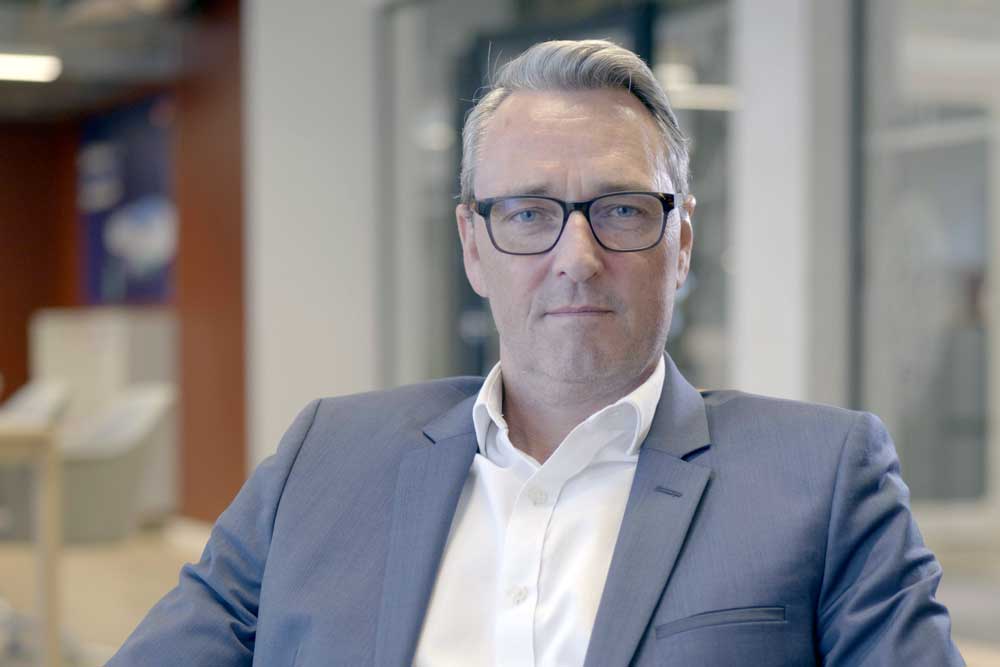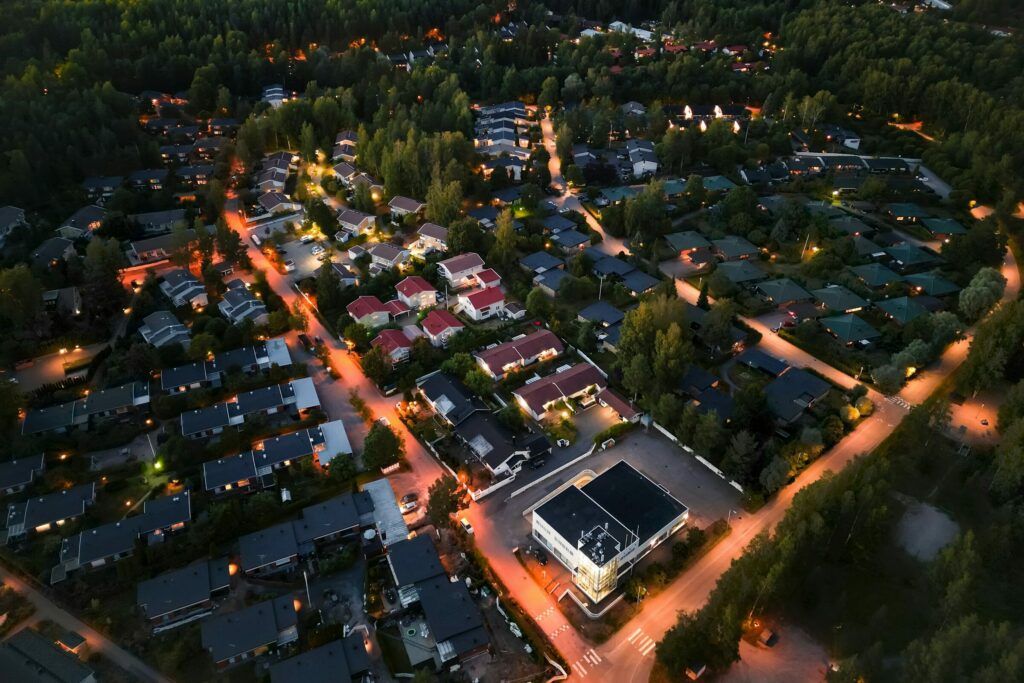The urgency of climate action has never been greater. While it can feel lost in the maelstrom of world events, governments – and companies – around the globe continue to accelerate their efforts to reduce greenhouse gas emissions as temperatures continue to rise and increasingly extreme weather exacts ever greater costs.
Globally, progress remains mixed. Total emissions rose at the latest measure, increasing to 53 billion tonnes – up 3.3% since 2019 versus the 43% decrease by 2030 envisioned by the Paris Agreement.
Among the 195 signatories to the Paris Agreement, however, the EU is leading the charge.
The world’s fourth largest emitter of greenhouse gases, its target is to achieve climate neutrality by 2050. At its latest reading, the EU’s 27 nations had achieved an 8.3% annual reduction – the largest in decades – and a 37% overall reduction since 1990.
That progress means the EU is almost on track to reach its target of cutting emissions to at least 55% of 1990 levels by 2030. Notably, it has achieved this while demonstrating that economic growth is not inherently tied to increasing emissions; GDP has grown 68% in the EU over the same period.
But being almost on track is not the same as hitting the target. The EU must achieve a reduction of 134 million tonnes of emissions every year to reach its goal, a number slightly higher than it has achieved on average to date. To achieve that goal, the latest EU Climate Action Progress Report says “efforts will have to focus increasingly on ‘harder-to-abate’ sectors”.
Building focus
One such sector represents both an enormous challenge and a huge opportunity: Buildings.
Collectively, our buildings consume vast amounts of energy for heating, cooling, and electricity. While the EU is rapidly transitioning away from supplying that demand with fossil fuels, buildings still represent more than a third of all energy-related emissions in the region. Recognising that 75% of its building stock is energy inefficient, the EU revised its Energy Performance of Buildings Directive (EPBD) in 2024 with the aim of turning that around. Under its terms, all new buildings must be zero-emission by 2030, and the EU’s entire housing stock should be renovated to become highly efficient and decarbonised by 2050.
The ambition is huge and for building operators and energy providers the transition is complex. Increasingly extreme weather (Europe is warming faster than any other part of the world) has made demand less predictable, and the rise of renewable energy sources have made energy supply more variable, requiring smarter grid management. At the same time, demand-side pressures, including electric vehicle charging and urban expansion, are reshaping consumption patterns.
Without intelligent solutions, the risk of grid instability and inefficient energy use grows. With them, though, the rewards are plentiful.
Energy efficiency reduces bills, and therefore energy poverty, driving increasing living standards. Building operators save money, too, while energy suppliers benefit from reduced peak loads and the opportunity to leverage buildings themselves as energy stores.
Such intelligence is now possible to engineer with the emergence of AI in combination with cloud computing, Internet of Things, and advanced data analytics.
It’s something Danish engineering powerhouse Danfoss knows very well. It has been, heating and cooling buildings around the world since its founding in 1933. Despite its modern scale, the company is still family owned and resolutely committed to its central mission to ‘engineer a better future’.
In the last few years Danfoss has consolidated its digital operations and added software to its portfolio of engineering capabilities. One result has been an AI-driven, data-led solution called Leanheat ® Building, developed in partnership with AWS, that is already producing remarkable, transformative results for building owners, energy suppliers, and entire urban districts.
Leanheat® Building
“At Danfoss, we’ve always taken pride in being in the forefront of technology. It’s something that we expect of ourselves. It’s something our customers expect,” says Thomas Kolster, head of commercial operations and strategy within Danfoss’s Digital Services division.
He explains the creation of the division three years ago was a mechanism by which the company could bring together an array of software solutions it had developed over the years into a single team devoted to the digital transformation of its customers.
“It’s an end-to-end organisation. We have the R&D, the developers, AI engineers, data scientists, and the commercial, financial, and customer success teams all in one place. Leanheat Building is a big part of that.
“In a nutshell, it’s an AI-powered solution that understands the unique properties of any building and optimises its energy efficiency in real time, more or less autonomously.”
In developing Leanheat Building, Danfoss was able to leverage its huge existing physical footprint in buildings around the world. Its AI has been trained with over a decade of real-world data from thousands of buildings to refine its understanding of structures’ unique behaviour. By integrating other data sources – from weather forecasts and heating system performance to energy tariffs – it is able to dynamically optimise heating with remarkable precision.
Leanheat Building continuously forecasts heating needs 48 hours in advance, adjusting hourly to minimise energy consumption, lower costs, reduce CO₂ emissions, and enhance efficiency.


From the customer’s perspective, it is also as fast and simple to deploy as it is to use, says Natalie Schnippering, head of digital services at Danfoss. Facilitated in part by the fact Danfoss already supplies a large number of buildings with their heating systems, the ease of installation is a benefit to both the customer and the policy makers driving the market towards efficiency on an accelerated timeline.
“I always say if you have a software solution like Leanheat, it’s a click of a button to get it installed,” says Schnippering.
“Every district heating network has a substation, and in the basement there’s a controller – probably from Danfoss. We hook into the controller and pull the data, then our software and AI runs on it. The system runs in the background, fully managed, and the customer typically doesn’t need to do anything other than sit back as they start to save up to 20% on their energy costs.”
Schnippering adds that in an ideal scenario, customers wouldn’t even need to view the Leanheat dashboard they are provided with. However, that portal adds another layer of cost optimisation for building operators, who can use it to proactively detect and tackle emerging issues in rooms or apartments and drive operational efficiencies.
Benefits cascade to district energy providers, too, as Leanheat-equipped buildings become active participants in the energy ecosystem.
“Our customers need tools to orchestrate both the supply and the demand side, so we avoid just producing more and more energy to meet an increasing need,“ says Kolster.
“Leanheat’s AI logic happens in the cloud, reacting to various data points and making real-time changes to the substation that is the connection to the district heating system. Of course, the energy savings make sense to building operators and tenants, but it also makes sense to the heating providers. They can use the buildings flexibly to reduce peak loads on the supply side.
“Peaks are expensive and typically not environmentally sustainable, and we can reduce those by up to 30%.”
Scaling the benefits
Since its inception around 10 years ago, and now as a centrepiece of Danfoss’ digital division, Leanheat Building has been deployed to buildings and districts across Europe, where it has proved its credentials.
It is now optimising energy use in more than 6,000 buildings across the continent, encompassing close to 250,000 apartments, and reducing their typical energy use by 20%. That represents a massive 180,000MWh of energy saved annually, equivalent to 12,000 family houses, and 120MW of peak-load reductions for greener, more stable energy grids.
Says Schnippering: “We are certainly not stopping here – there’s so much potential out there. Our plan is to at least double our install base every year going forward, as we have in the last two years.”
Achieving that rapid scale has meant building Leanheat on a platform that’s easily scalable, adaptable, secure, and capable of handling huge volumes of data. Key to accomplishing that has been a close partnership with AWS.

AWS has provided cloud infrastructure to the Danfoss team since the inception of the Leanheat project, but it’s a partnership that has deepened in the last two years to include much broader collaboration as Danfoss planned rapid expansion.
AWS is famous for its customer ‘obsession’ and a process that starts by imagining a detailed press release announcing how they succeeded for customers, before then working backwards to engineer it. In that, says Kolster, the companies are closely matched: “Danfoss and AWS share a lot of common values, and we like to work with partners that can help us innovate, and challenge us.
“We have the domain knowledge and after several years working together, AWS understands us, our customers, our applications, and our way of thinking. They understand that our objective is to help customers on their decarbonisation journey, and we both have skin in that game.”
Michael Wennerstrom, Country Manager for Denmark and Iceland at AWS, concurs. He points out that Amazon as a whole is the world’s largest buyer of green energy and is deeply invested in renewable energy projects around the world. Today, it produces as much green energy as it consumes.
“As a company, both AWS and Amazon as a whole, sustainability is at the core of everything we do today,” he says.
“With new EU directives, and rising energy prices, the need for intelligent buildings is big. Danfoss have created a very impressive solution. You can see how their engineering and their desire to create real value for their customers comes together super strong with AWS and our innovation focus and technology.
“Danfoss has big ambitions to grow Leanheat across the globe, and we’re excited to be with them in that – we can go global in seconds.”
Schnippering says Danfoss needed a partner with the weight and depth of AWS to help launch Leanheat on a trajectory of global expansion, having so impressively proven its capabilities to date. But it’s a partnership rooted in a joint mission and a focus on customers before profits that has led to success.
“We have the best engineers and data scientists around, and we have big plans, but AWS has been key to helping us innovate at scale.
“They say you never want to be the smartest person in the room, and that’s what you get with AWS. There are so many clever people you can brainstorm with, spar with, be honest with, have fun or difficult conversations with; that’s what partnership means, and it’s how we get to where we need to be.
“This will be a super exciting journey to go on.”
In action: Leanheat® Building

Espoo: A citywide energy transformation
The City of Espoo, Finland, embarked on a pioneering collaboration with Danfoss and its Leanheat Building service to optimise heating across its vast building stock.
Danfoss worked with the district heating provider and an array of different building operators and owners to enrol more than 100 public buildings and nearly 15,000 apartments in the programme.
Leanheat Building’s AI-driven optimisation helped Espoo achieve €200,000 in annual energy savings.
By intelligently adjusting heating based on real-time data, the system reduced total consumption by 4,500 MWh, smoothing out peaks and improving indoor comfort.
“It’s a project we're all very proud of. We managed to decarbonise the district heating solution, create a more stable grid, and leverage the flexibility of the buildings so energy providers could produce just the amount of energy that's needed. That helps avoid using backup energy sources, which are typically gas or coal based.”
- Thomas Kolster

Enercity: AI-powered district heating in Hannover
Enercity AG is one of the largest utilities in Hannover, Germany, and faced the challenge of reducing and balancing energy consumption across a huge and complex portfolio of buildings.
Enercity is now working with Danfoss to take the solution to the owners of 5,000 apartment buildings, including 50,000 housing units.
The AI-powered system continuously analyses temperature and humidity data, enabling demand-based heating regulation, and also enables operational savings: A team at Danfoss remotely monitors energy usage in individual units to proactively flag and triage issues where they arise.
“In the first heating season, Enercity noticed we’d already saved 10% of energy and dropped the peak loads by 20%. They’re also making operational savings - you get a lot of data that you can investigate remotely and send service technicians proactively in a much more efficient, smarter way. Eventually, 5,000 buildings will be enrolled into Leanheat and then Enercity and all their customers will truly start to benefit.”
- Natalie Schnippering

Fortum: Virtual heat storage for smarter energy use
Fortum, a major energy supplier headquartered in Finland and operating across a number of European countries, leveraged Leanheat ® Building’s Virtual Heat Storage (VHS) technology to transform buildings into thermal batteries.
The company integrated Leanheat Building with its Smart Living Solutions product, which enables customers to monitor their individual energy consumption.
By preloading heat when production capacity was high and redistributing it during peak demand – typically shower-time in the morning and dinner time in the evening – Fortum created the equivalent of a 10MW thermal battery, leading to a 25MW peak reduction across its grid.
This innovative approach not only cut costs but also reduced reliance on fossil-fuel-based backup energy sources, accelerating the transition to emission-free district heating.



